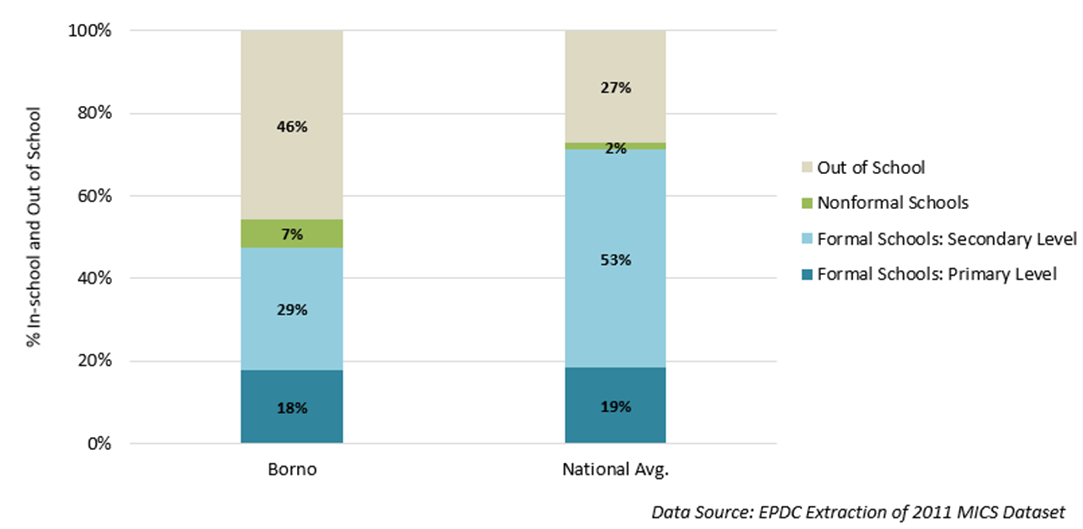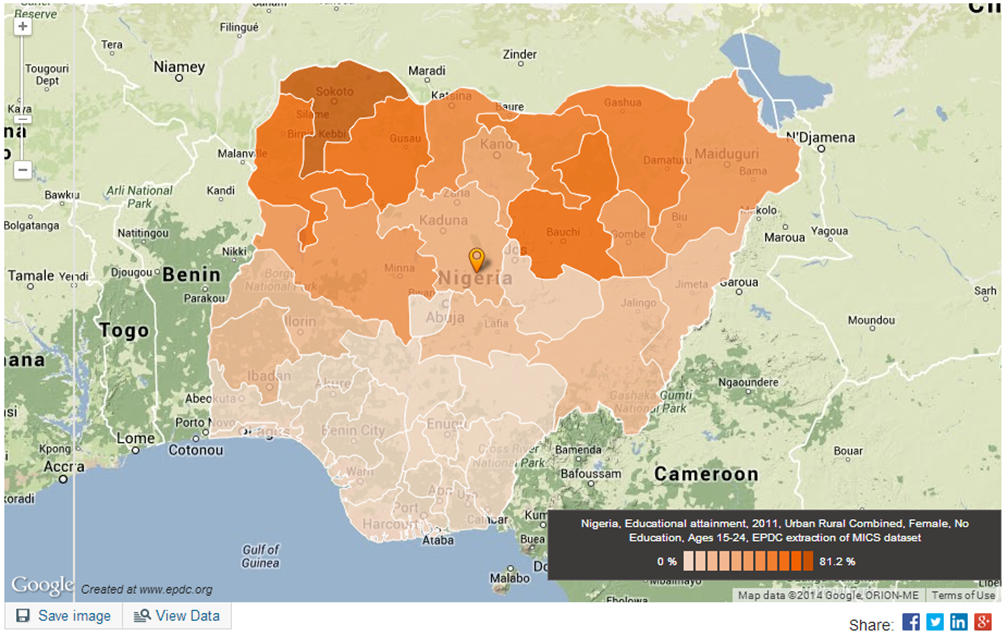You are here
Schooling in northern Nigeria: Challenges for girls' education
Schooling in northern Nigeria: Challenges for girls' education
By Rachel Hatch, Research Associate, Education Policy and Data Center
School participation remains a challenge across Nigeria, and obstacles are particularly severe in northern states. In addition to issues of school access, family and school resources, and attitudes towards education, school attendance in northern Nigeria is impeded by the increasingly brazen extremism of Boko Haram, an Islamist militant group, and its targeting of girls’ education. The group opposes the Western-style education associated with formal schooling in Nigeria and seeks to relegate women exclusively to the household.[i] As a result, risks associated with school-going are compounded for girls and young women in a context where female educational attainment is persistently low. Indeed, in many northern states more than 50% of young women ages 15-24 have no experience with formal education (Figure 1, EPDC extraction of MICS 2011 dataset).
The April kidnapping of an estimated 276 school girls in Borno state by Boko Haram testifies to the magnitude of risk that girls and young women bear when they attend school. This challenge to safety accompanies great educational need in Borno (Figure 2), where the female secondary school net attendance rate is only 29% in comparison to a national average of 53%.[ii] An additional 18% of secondary school age[iii] girls attend formal school in Borno but at the primary level. These girls may benefit from exposure to schooling but they are behind for their age and at greater risk of dropping out. A further 7% of secondary school age girls attend nonformal programs.[iv] Given the increased violence from Boko Haram from 2010 forward, it is impressive that even 54% of secondary school age girls participate in some form of schooling, formal or nonformal. Still, alarmingly, nearly half (46%) of girls of secondary school age aren’t attending either formal or nonformal education programs and therefore don’t receive any benefits of schooling. Addressing the educational needs of young women in Borno and across northern Nigeria requires investment that is sensitive to the dangers of this context and helps to ensure safe participation in school.
Figure 1. Percentage of Young Women Ages 15-24 with No Education
Figure 2. Percentage of Girls of Secondary School Age (12-17) in School and Out of School

[i] For more on the evolution of the ideology of Boko Haram, see the following editorial: Peters, M.A. (2014). ‘Western Education is Sinful’: Boko Haram and the abduction of Chibok schoolgirls. Policy Futures in Education, 12(2), 186-190.
[ii] Data source for all figures is EPDC extraction of MICS 2011 dataset. Because MICS surveys ask about attendance at any point during a school year and don’t consider how regularly a girl attends, it is likely the figures overestimate school participation.
[iii] The official secondary school ages in Nigeria are 7-12 (UIS Data Centre, accessed 3/2014). For more on the structure of the education system and official school ages in Nigeria, see www.epdc.org/country/nigeria.
[iv] According to the MICS4 Manual, nonformal schools are schools that do not teach the standard curriculum and include “religious schools, such as Koranic schools, that do not teach a full, standard school curriculum” (p. 18). Many of the Qur’anic and Islamiyya schools in northeastern Nigeria would fall under this definition. The full MICS4 manual is available at http://www.childinfo.org/mics4_tools.html.


Add new comment